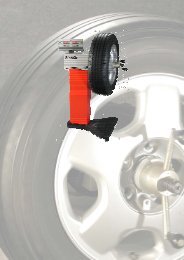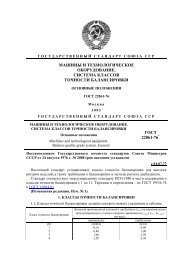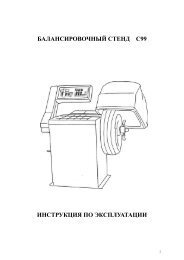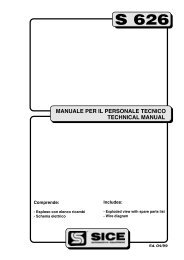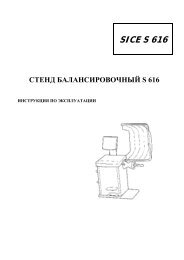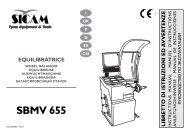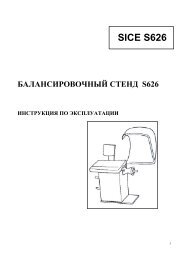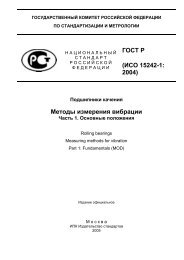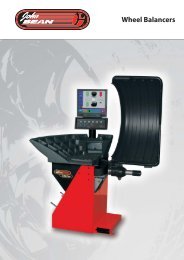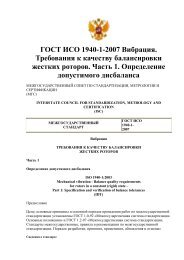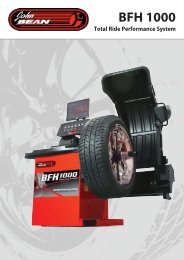Garrett Catalog - RB Racing
Garrett Catalog - RB Racing
Garrett Catalog - RB Racing
Create successful ePaper yourself
Turn your PDF publications into a flip-book with our unique Google optimized e-Paper software.
<strong>Garrett</strong> ®<br />
by Honeywell<br />
Turbo Selection - Gas<br />
Calculate manifold pressure required to meet the Horsepower, or<br />
flow target:<br />
Where:<br />
· MAPreq = Manifold Absolute Pressure (psia) required to meet the<br />
horsepower target<br />
· Wa = Airflow actual(lb/min)<br />
· R = Gas Constant = 639.6<br />
· Tm = Intake Manifold Temperature (degrees F)<br />
· VE = Volumetric Efficiency<br />
· N = Engine speed (RPM)<br />
· Vd = engine displacement (Cubic Inches, convert from liters to CI<br />
by multiplying by 61.02, ex. 2.0 liters * 61.02 = 122 CI)<br />
EXAMPLE:<br />
To continue the example above, let’s consider a 2.0 liter engine<br />
with the following description:<br />
· Wa = 44 lb/min as previously calculated<br />
· Tm = 130 degrees F<br />
· VE = 92% at peak power<br />
· N = 7200 RPM<br />
· Vd = 2.0 liters * 61.02 = 122 CI<br />
= 41.1 psia (remember, this is<br />
Absolute Pressure. Subtract Atmospheric Pressure to get Gauge<br />
Pressure (aka boost):<br />
41.1 psia – 14.7 psia (at sea level) = 26.4 psig boost<br />
As a comparison let’s repeat the calculation for a larger<br />
displacement 5.0L (4942 cc/302 CI) engine.<br />
Where:<br />
· Wa = 44 lb/min as previously calculated<br />
· Tm = 130 degrees F<br />
· VE = 85% at peak power (it is a pushrod V-8)<br />
· N = 6000 RPM<br />
· Vd = 4.942*61.02= 302 CI<br />
= 21.6 psia (or 6.9 psig boost)<br />
This example illustrates that in order to reach the horsepower<br />
target of 400 hp, a larger engine requires lower manifold pressure<br />
but still needs 44lb/min of airflow. This can have a very significant<br />
effect on choosing the correct compressor.<br />
With Mass Flow and Manifold Pressure, we are nearly ready to<br />
plot the data on the compressor map. The next step is to determine<br />
how much pressure loss exists between the compressor and the<br />
manifold. The best way to do this is to measure the pressure<br />
drop with a data acquisition system, but many times that is not<br />
practical.<br />
Depending upon flow rate, charge air cooler characteristics,<br />
piping size, number/quality of the bends, throttle body restriction,<br />
etc., the plumbing pressure drop can be estimated. This can be 1<br />
psi or less for a very well designed system. On certain restrictive<br />
OEM setups, especially those that have now higher-than-stock<br />
airflow levels, the pressure drop can be 4 psi or greater.<br />
For our examples we will assume that there is a 2 psi loss. So to<br />
determine the Compressor Discharge Pressure (P2c), 2 psi will be<br />
added to the manifold pressure calculated above.<br />
Where:<br />
· P2c = Compressor Discharge Pressure (psia)<br />
· MAP = Manifold Absolute Pressure (psia)<br />
· ΔPloss = Pressure Loss Between the Compressor and the<br />
Manifold (psi)<br />
For the 2.0 L engine:<br />
For the 5.0 L engine:<br />
= 43.1 psia<br />
= 23.6 psia<br />
Remember our discussion on inlet depression in the Pressure<br />
Ratio discussion earlier, we said that a typical value might be 1 psi,<br />
so that is what will be used in this calculation. For this example,<br />
assume that we are at sea level, so Ambient Pressure is 14.7<br />
psia.<br />
We will need to subtract the 1 psi pressure loss from the ambient<br />
pressure to determine the Compressor Inlet Pressure (P1).<br />
Where:<br />
· P1c = Compressor Inlet Pressure (psia)<br />
· Pamb = Ambient Air Pressure (psia)<br />
· ΔPloss = Pressure Loss due to Air Filter/Piping (psi)<br />
P1c = 14.7 - 1 = 13.7 psia<br />
With this, we can calculate Pressure Ratio ( ) using the<br />
equation.<br />
For the 2.0 L engine: = 3.14<br />
For the 5.0 L engine: = 1.72<br />
We now have enough information to plot these operating points<br />
on the compressor map. First we will try a GT2860RS. This turbo<br />
has a 60mm, 60 trim compressor wheel.<br />
Clearly this<br />
c o m p r e s s o r<br />
is too small,<br />
as both points<br />
are positioned<br />
far to the right<br />
and beyond the<br />
c o m p r e s s o r ’s<br />
choke line.<br />
Honeywell<br />
www.TurboBy<strong>Garrett</strong>.com<br />
11



